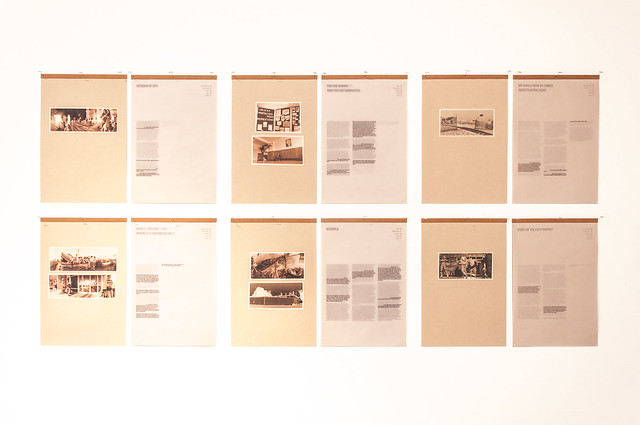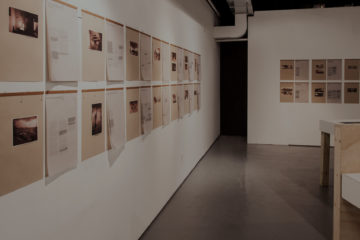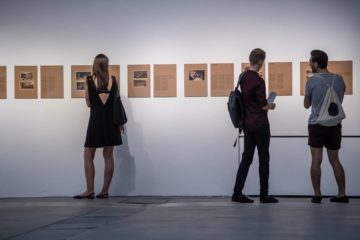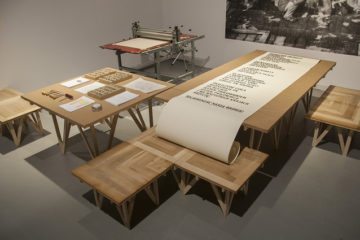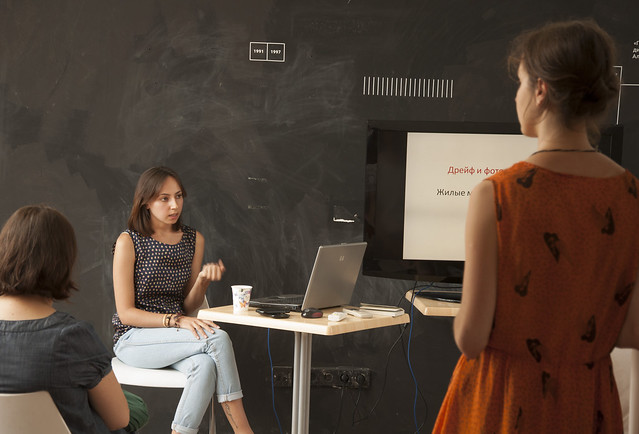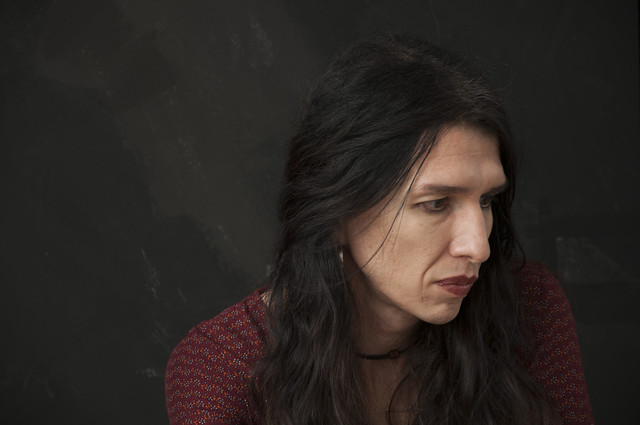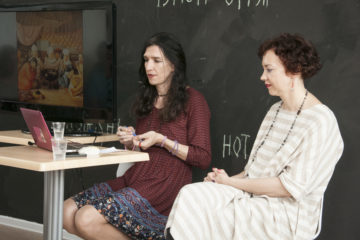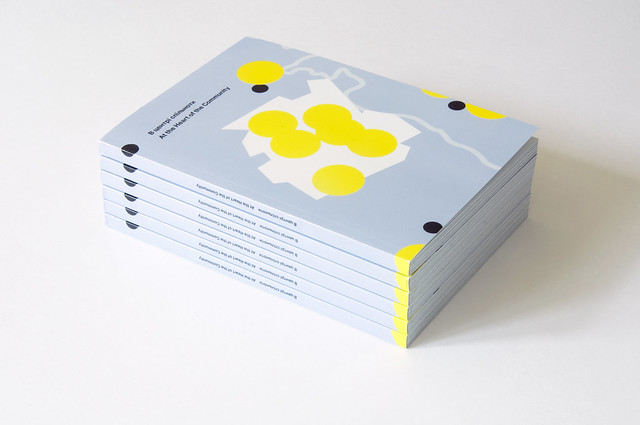Open Place interviewed Natasha Danberg
April 18, 2015
Stockholm, Sweden
In 2015 at the SUPRMARKET art fair was presented space Köttinspektionen from Uppsala. The organization was founded by art group haka, independent theater Teater C and ballet troupe Autopilot. Natasha Danberg is a member of haka. Natasha moved from Russia to Sweden in 2000. In here works she mixes memory, cultural traditions and a wide range of techniques, in attempt to reveal the absurd nature of the clash of dreams and reality. Natasha Danberg told about contemporary art in the conservative Uppsala, about cultural policy of Sweden, and narrow-minded fear of the galleries.
"To pay to the artists - the question of democracy"
Natasha Danbeg: Independent organizations in Sweden it is the basis of the democracy of the country. For example, hobby-clubs: chess, football, art that are not depending on house of culture or city authority – a few people gathered together and created their own club. The housing cooperatives are the other example of independent organization, with elected board and monthly meetings and protocols. The democratic system penetrates the society at all levels. My membership in haka was accepted by voting of the members that were already a part of the art group.
Open Place: By the way how did haka appear?
Natasha Danbeg: This is an organization from Uppsala. Haka is abbreviation of the names of four artists, who founded organization: Helena Laukkanen, Anna-Karin Brus, Katarina Sundkvist Zohari and Agneta Forslund. We’ve met at Uppsala. There was an empty school that was used as a studio place for about 40 artists. It was my first year in Sweden, and I had a studio at that school either. When that was decided to give this building back to the school, artists had to search the new places for the work. I with four others future participants of haka group were going to share the studio. When we moved I gave a birth and missed for two months. Meanwhile the partners organized the haka, and I joined the group after I was back.
Open Place: What united of the members of the group, if not the premises?
Natasha Danbeg: Uppsala is the Sweden analogue of Oxford – one of the intellectual centers of Europe, there is the big old University with many students. From other hand Uppsala it is the religious center and insanely conservative city. That is why art, especially contemporary art, is developed very poorly. Mostly the clumsy exhibitions are conducted and free young art is not shown. The first exhibition organized by haka had place in premises of abandoned store for the small money and got huge positive feedback. For a long time we didn’t have our own exhibition space –we’ve got it only this year. We have more possibilities but more things to do and I need to admit, that it is a completely different situation and different activity.
Open Place: Could you tell me more about Köttinspektionen?
Natasha Danbeg: The space belongs to commune. In 1920-1940 there was meat inspection, than the premise was empty. As far the building is considered as the cultural heritage the reconstruction is prohibited. No one from private investors is interested to use it. We with our friends from independent theatre and ballet troupe decided that we could care of this space if unite our forces. Together we created the organization Köttinspektionen (“Meet Inspection” in Sweden). Through this umbrella structure we apply to the municipality for the money for development of the project. They allocate us with money, that we actually pay them back as payment for the rent and utilities. So we ask a bit more money, enough to develop at least some artistic projects.
We pay honorarium to the artists who participate in the exhibitions, organized by haka. It is the question of democracy. The director of an art museum, the watchwoman, and the technical staff gets the salary. The artist who exhibited in that museum gets only a flower during the vernissage. We are trying to pay honorarium to the artist firstly, though we need save on everything. We don’t publish the flyers, the advertisement we do through social networks or personal contacts with the journalists. At the same time, our work is not paid. All members of haka have another job. I’m teaching and make computer graphics for TV news, and give the lectures.
Open Place: How does the responsibility is distributed in haka?
Natasha Danbeg: During the meeting we decide who and what responsible for, in each certain project. I mostly do marketing and write press releases. I find it easy to talk to journalists, because I worked as an art director in a number of publications. Fund-raising for the project we usually do together. We accept new project, only if all of the five member of collective approve the idea.
Usually, we meet together, every week when we work on project. We have a secretary who does protocol of the meeting. We keep the protocols of all meetings for 12 or 13 years we exist. Everything is structured very well, though we do it for ourselves only. We don’t have to report to anybody.
"The museums' pedagogy is popular In Sweden"
Open Place: Who is your audience?
Natasha Danbeg: It depends on project. When we would talk about exhibition Agneta Forslund, member of haka, whose painting we are planning to show soon, the lovers of painting will come, the classical artistic gathering. It will be “slender” and specific exhibition.
Now we are working on the exhibition of Finnish documentary filmmaker. She makes four installations connected with her film about how the refugees who were subjected to torture in the country of their origin, legalized in Finland. Similar problems related to this topic, we have in Sweden. Fans of painting, drawing and graphics possibly will not come to this exhibition. It will rather people who are interested in political and social issues. We collaborate with representatives of the Swedish Church on this project – its parishioners, will come to the opening too. I think there will be many artists as well as film mob. Plus we actively work with schools. I teach in the ninth grades, and probably, I’ll bring all of my students to this exhibition.
Open Place: Should cultural organization have political overtones?
Natasha Danbeg: Some yes, some no – we show qualified art. It can be solely aesthetic or with certain political goals. It also very much depends on the members of the group. For example I work in journalism for a long time, and I can’t get rid the politics. I did a big political project about military propaganda on the example of the Swedish and the Russian militaries, who served in Afghanistan. The other members of our group support and understand me though they don’t engage in political art.
Open Place: Why do you work with the schools?
Natasha Danbeg: It is very common situation here. The museums’ pedagogy is popular In Sweden. All museums, exhibition halls and galleries collaborate with schools. The person has no relation to art, often afraid to enter the exhibition hall. I had a dream to rid the school kids of this fear. We visited museums and gallerias a few times a year, I explained to children all features and details. Now I see the results: my first students, who became adults, come to the gallery, read the sign next to the pictures, feel free to communicate with the artists. Children today perfectly understand video and sound-art, because they are in a certain media environment. It is interesting to hear their thoughts. That is why we work with the schools.
Emphasizing the quality of art
Open Place: How do your exhibitions’ program is formed?
Natasha Danbeg: It depends on the source of money. The municipality is caring about quality. We talk about artist, whose exhibition we’d like to organize, show the positive reviews. Officials are not interested in ideology, only in quality, and they trust us.
Members of haka have common aesthetic and political views. During the selection of the works at some intuitive level everybody say «No» at once for some project.
We try to vary the types of projects. After the exhibition of video art it is great to show sculptures, some three-dimensional objects, and then – festival of performance art. But many things happen spontaneously.
Open Place: How does your organization influence the cultural policy of Sweden?
Natasha Danbeg: There are a lot of aspects of this cultural policy. We developed the political projects about vulnerability based on art made by women. There were a lot of reviews, visitors. Has it affected the attitude of society to these issues – I do not know. Our aim was only to show that the vulnerability exists.
If we would speak about cultural policy as the way of relationship of society to the artist, we actively work in this sphere. We insist that artist should get fee. Recently we’ve talked about this with officials of the municipality during the meeting. They were very surprised, when they heard about it. But dancers and actors get paid for repetitions and performances. Different areas of art have different working conditions. This is political question. We have discussed this problem with many of Swedish gallerists and cultural functionaries as well as we are going to discuss it with politicians. Our activities in haka is unpaid, but we still do it – it’s kind of dependence.
"It is boring for me to be only an artist"
Open Place: How often haka prepares new projects?
Natasha Danbeg: Differently, for example in 2009 we worked a year on a huge for our institution show, “Swedish family”. The project involved 25 artists. We presented it at the Moscow Biennale. Over the past year we have made six exhibitions. But the projects are different. For performance is nothing special to do: provide people with the keys to the premises, and they work. To prepare video installation, in cooperation with the Swedish church it needs more of your time. On average, we do three to six exhibitions a year.
Open Place: How do you find the time for own projects?
Natasha Danbeg: There is no time. Each individual has many aspects of a personality. I am mother, wife, teacher of drawing, graphic designer, author of articles on contemporary Russian art, curator and artist. It is boring for me to be only an artist. Earlier I used to paint. It was pleasant work. I had a gallerist, who sold my paintings. I had the ambitions to live from the sales. Then I started to work with video only. The idea that my art would be a source of financial well-being, disappeared. When I freed from this thought, it became unimportant if I do own projects or curate the project of others. The main thing, that it is interesting for me.
Now with great pleasure I curate the exhibition of documentary filmmaker – it is going to be a good job. It is interesting for me to review the videos for the project and to discuss them with author. This is highly creative process, and I learn something at the time. And when I work on my own art project, I use the experience gained from this my collaboration.

